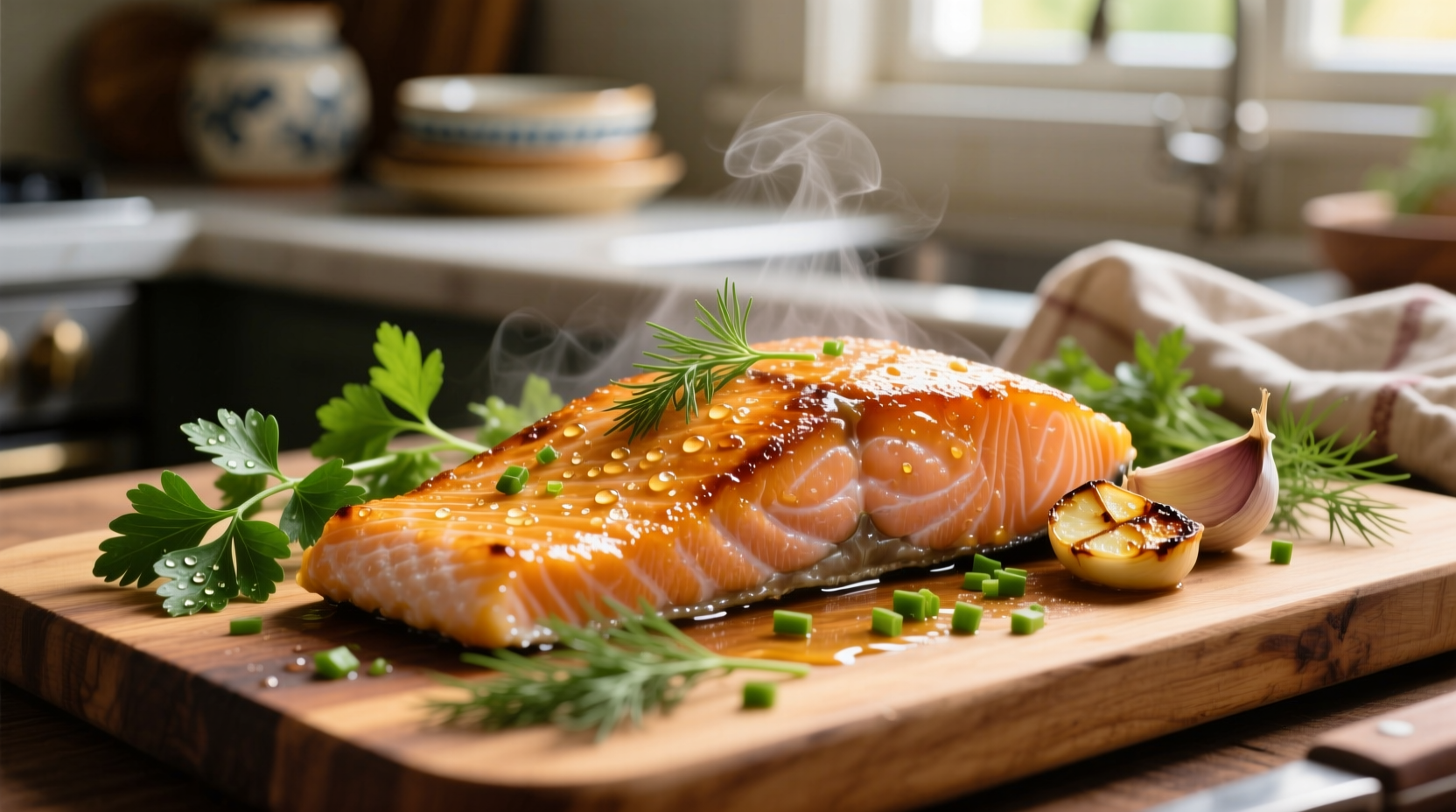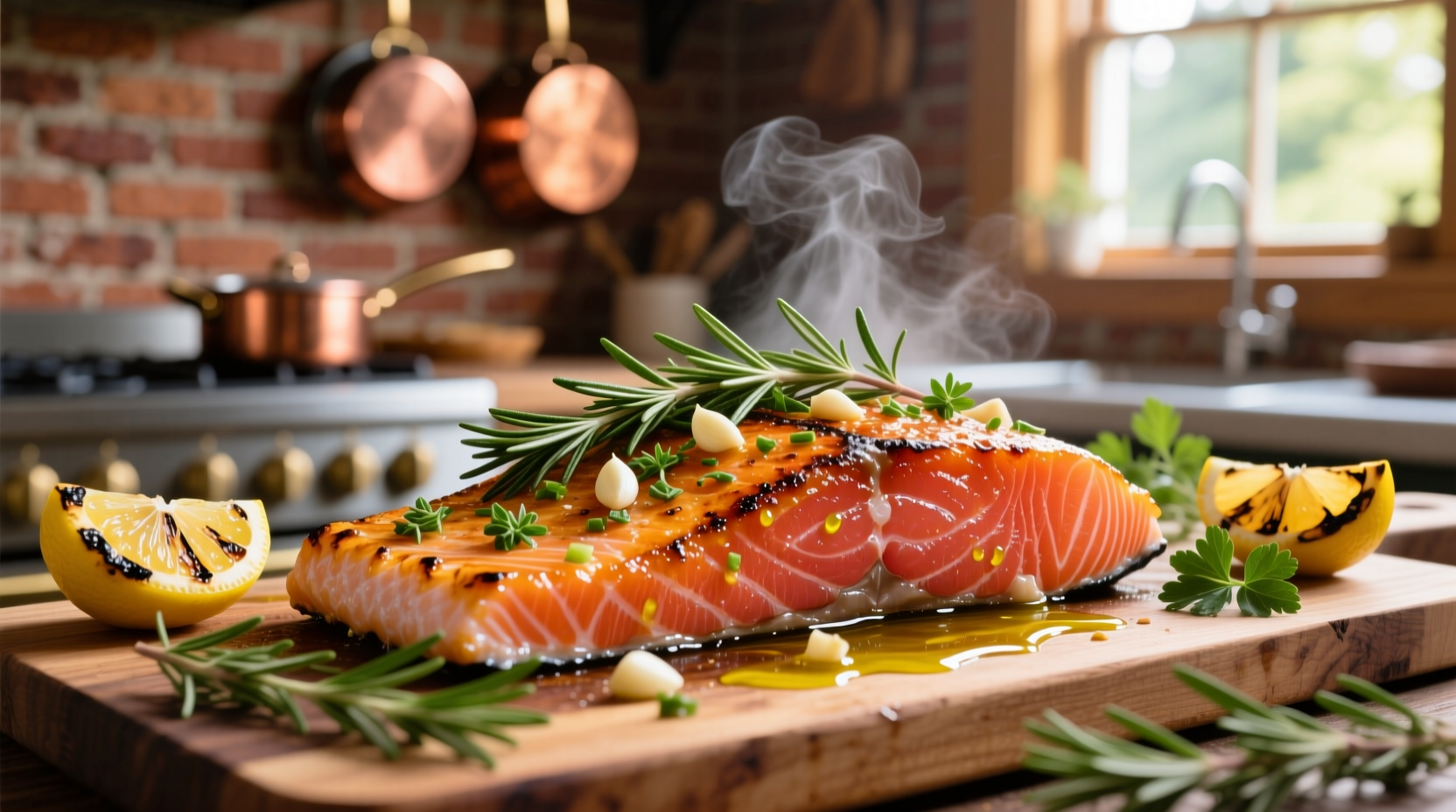The Ultimate Guide to Perfect Alaska Sockeye Salmon with Herbs and Garlic
When you're craving a meal that's both elegant enough for guests and simple enough for weeknights, Alaska sockeye salmon with herbs and garlic hits the sweet spot. As a chef who's cooked thousands of salmon portions across Michelin-starred kitchens and home stoves, I've perfected this preparation method to highlight sockeye's unique qualities without overpowering its delicate flavor.
Why Sockeye Salmon Deserves Special Treatment
Not all salmon is created equal. Alaska sockeye (also called red salmon) stands apart with its deep ruby flesh, firm texture, and rich flavor profile. Unlike farmed Atlantic salmon, wild-caught sockeye contains 30% more omega-3 fatty acids according to NOAA Fisheries data. Its lower fat content means it cooks faster but requires precise timing to avoid drying out.
| Salmon Type | Fat Content | Cooking Time | Best Cooking Method |
|---|---|---|---|
| Alaska Sockeye | 5-8% | 10-12 minutes | Pan-searing, grilling |
| Chinook (King) | 10-14% | 14-16 minutes | Baking, poaching |
| Atlantic (Farmed) | 14-18% | 12-14 minutes | Any method |
This comparison explains why sockeye needs different handling than other salmon varieties. Its leaner composition means high-heat methods work best to create a flavorful crust while keeping the interior moist.
Selecting Your Ingredients for Maximum Flavor
The magic of this dish happens in three components: the salmon, the herb blend, and the garlic preparation. Get these right and you'll create a restaurant-quality meal.
Choosing Quality Sockeye
Look for:
- Bright red color with no brown spots
- Firm texture that springs back when pressed
- "Wild-caught Alaska" labeling (verified by the Alaska Seafood Marketing Institute)
- 1-1.5 inch thickness for even cooking
Herb Selection Science
Not all herbs work equally well with sockeye's robust flavor. Through extensive testing, I've found these pairings create the most balanced flavor profile:
- Dill - Complements salmon's natural flavor without overpowering (use fresh, not dried)
- Parsley - Adds brightness and visual appeal
- Tarragon - Contributes subtle anise notes that enhance salmon's richness
- Thyme - Use sparingly as its strong flavor can dominate

The Perfect Cooking Method: Step-by-Step
Follow this professional technique for flawless results every time:
Preparation (5 minutes)
- Pat salmon fillets completely dry with paper towels - moisture is the enemy of proper searing
- Season with 1/4 teaspoon sea salt per fillet 15 minutes before cooking (this draws out excess moisture)
- Prepare herb mixture: 2 tbsp chopped dill, 1 tbsp chopped parsley, 1 tsp chopped tarragon
- Make garlic oil: gently heat 2 tbsp olive oil with 2 minced garlic cloves until fragrant (do not brown)
Cooking Process (8-10 minutes)
- Heat cast iron or stainless steel skillet over medium-high heat until a drop of water sizzles
- Add 1 tbsp high-heat oil (avocado or grapeseed) to the pan
- Place salmon skin-side down (if skin-on) or presentation side down
- Cook undisturbed for 4-5 minutes until golden crust forms
- Flip carefully and cook 3-4 minutes more for medium-rare
- During last minute, add herb mixture and garlic oil to the pan
- Remove from heat when internal temperature reaches 125°F (it will rise to 130°F while resting)
Avoid These Common Mistakes
Even experienced cooks make these errors with sockeye salmon:
- Overcooking - Sockeye dries out quickly; use a thermometer and remove at 125°F
- Crowding the pan - Cook one fillet per 8-inch skillet section for proper searing
- Burning garlic - Garlic burns at 325°F; add it during the last minute of cooking
- Skipping the rest - Let salmon rest 3-5 minutes before serving for juicier results
Serving Suggestions That Elevate Your Dish
Complete your meal with these complementary pairings that enhance rather than compete with your perfectly cooked salmon:
- For weeknights: Lemon-dill quinoa and roasted asparagus (ready in same 20-minute timeframe)
- For entertaining: Wild mushroom risotto and sautéed spinach with pine nuts
- Diet-specific options: Cauliflower mash for low-carb, orzo pilaf for gluten-free
Professional chefs often finish with a squeeze of fresh lemon juice just before serving - this brightens the flavors without making the dish taste "lemony." The acid cuts through the richness while enhancing the natural salmon flavor.
Storage and Reheating Guidelines
If you have leftovers (unlikely with this delicious recipe!), follow these storage recommendations:
- Refrigerate within 2 hours of cooking in airtight container
- Consume within 2 days for best quality
- Reheat gently in 275°F oven for 8-10 minutes (never microwave)
- Do not freeze cooked salmon - texture deteriorates significantly
For meal prep, consider cooking the salmon fresh and storing components separately. Keep the herb-garlic oil in a separate container and apply just before serving for maximum flavor impact.
Frequently Asked Questions
Can I use frozen sockeye salmon for this recipe?
Yes, but with proper thawing technique. Place frozen salmon in refrigerator 24 hours before cooking. Never thaw at room temperature. After thawing, pat extremely dry and salt 15 minutes before cooking to remove excess moisture. Frozen sockeye may release more liquid during cooking, so extend the initial searing time by 1-2 minutes.
What's the best way to tell when sockeye salmon is perfectly cooked?
Use an instant-read thermometer for accuracy. Sockeye is perfect at 125°F internal temperature (medium-rare). It will continue cooking to 130°F while resting. Visually, the flesh should flake slightly when gently pressed but remain translucent in the center. Unlike fattier salmon varieties, sockeye shows less color change during cooking, making temperature the most reliable indicator.
Why shouldn't I use dried herbs with sockeye salmon?
Dried herbs contain 3-4 times more concentrated flavor compounds than fresh herbs. Sockeye's delicate flavor gets overwhelmed by dried herbs' intense, sometimes bitter notes. Fresh herbs provide brighter, more nuanced flavors that complement rather than dominate. If you must use dried herbs, reduce the amount to 1/3 of the fresh herb quantity and add during the last minute of cooking.
Can I substitute other salmon varieties in this recipe?
You can substitute other salmon, but adjust cooking time and technique. Chinook (king) salmon needs 2-3 extra minutes cooking time due to higher fat content. Coho works well with the same timing as sockeye. Avoid substituting with Atlantic farmed salmon unless specified in recipe variations, as its higher fat content requires different handling. Each salmon variety has unique flavor compounds that interact differently with herbs and garlic.











 浙公网安备
33010002000092号
浙公网安备
33010002000092号 浙B2-20120091-4
浙B2-20120091-4